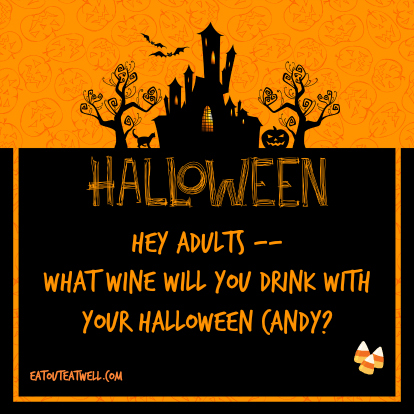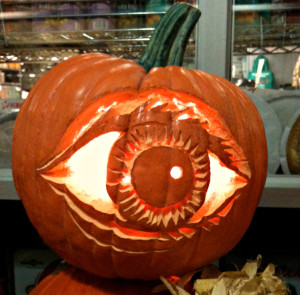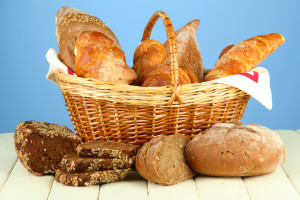 Halloween candy isn’t only for kids.
Halloween candy isn’t only for kids.
So, if you’re an adult, why not have some wine with your Halloween candy – whether it’s the candy you bought to give to trick or treaters or the handful of fun-sized treats you snagged from your kid’s collection.
There are many opinions about what beverages go well with what candy. The general consensus is that wine or beer should be sweeter than what you are eating which raises a Halloween candy pairing issue since all of the candy is pretty darn sweet.
But, of course, there are many opinions.
Here’s a synopsis of some of the recommendations I’ve found:
Nerds go best with sparkling wines like champagne, proseco, cava, and sparkling rose.
Starburst calls for light reds such as Pinot Noir, St. Laurent, Zweigelt or Gamay or sweet whites such as Reisling, Moscato, Malvasia.
The high acidity in Chenin Blanc off sets the sweetness in Jollyranchers.
Skittles also go well with the sweet whites or dry whites such as white table wine, Sauvignon Blanc, and Pinot Grigio.
The sweet creaminess of the yellow, orange, and white mellow crème kernels of Candy Corn can pair with sweet whites, rich whites such as Chardonnay, Marsanne, or Viognier, the sparkling wines, and Port. Or you can just keep shoving handfuls of them into your mouth without allowing time to sip!
KitKat and 3 Musketeers are lighter and fluffier candy and pair well with sparkling wines and medium reds such as red table wine, Sangiovese, Zinfandel, Merlot, and Grenache.
Try a Muscat with sugary Smarties.
Tootsie rolls stick to your teeth and pair well with the light reds.
Butterfingers go with the rich whites and the dessert wines such as late harvest ice wines, Sherry, Port, Tawny Port, and Ruby Port.
Twix also goes with the dessert wines and with the bold reds such as Cabernet Sauvignon, Monastrell, Malbec, and Syrah. The sweetness of ice wines will likely taste delicious with the caramel, cookies, and chocolate in Twix.
The cherry undertones of Pinot Noir pair nicely with Twizzlers – you could even dunk!
Reese’s pieces, those wonderful bites of peanut butter and chocolate, can go with the light reds, bold reds, and dessert wines.
Heath Bar (one of my all time favorites) goes well with the dessert wines.
M&Ms, while they’re melting in your mouth and not in your hands, can be washed down with the bold and medium reds. Try a red Zinfandel.
You can always depend on milk chocolate Hershey bars and of course they go with most wines, especially the rich and sweet whites and the light and medium reds.
With the more bitter Hershey’s Dark chocolate, try a red Syrah.
For the coconut lovers, the harsh tannins in Cabernet Sauvignon pair well with the dark chocolate and coconut in Mounds and Almond Joy.
The strong, sweet, creamy taste of Port pairs quite well with chocolate, caramel, and peanuts like the combo found in Snickers and with classic Caramels.
Sour Patch Kids – maybe aptly named — don’t seem to pair well with anything except a puckering mouth, but you can try a bubbly NV Rosé.
If there are some caramel apples to bite into, the toastiness of caramel and butterscotch might pair well with Muscat or Gewürztraminer because the acidity of the white wine should stand up well to the sweetness of the caramel. If you want to focus on the apple flavor, try ice wine, Sauternes, or a late-harvest Sauvignon Blanc.
And why not pair a Grand Cru Bordeaux with a 100 Grand Bar?
Happy Halloween!




